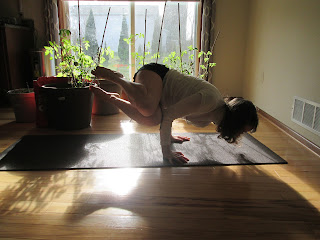Yoga and quality of sleep in school-children: a recent study published by the Journal of Clinical Sleep Medicine
Good quality sleep is necessary for physical
and mental health. In the case of children and adolescents sleep is a crucial
pillar of physiological, psychological and emotional development (1). Despite
the need to prioritize sleep to support health and normal development, a study
found that only 15.6 percent of middle school students meet the optimal nine
hours of sleep recommended by the National Sleep Foundation. 46 percent of
students sleep less than seven hours per night (2 and 3).
Children in communities of low socioeconomic
status experience even shorter sleep duration and poorer quality of sleep (4 and 5).
As a result of this, they are more likely to have behavioral problems, poor
academic performance, risky behaviors and obesity. Many factors play a role in
the dysregulation of sleep in children of lower socioeconomic status such as
social and family stress, food and housing insecurity, crowded and/or noisy
environments.
Early interventions that teach children to
cope with chronic stress may be helpful to support their mental, emotional and
physical health.
School based practices that
incorporated yoga-informed principles like mindfulness, breathing and movement
posture education have been used in more than 900 schools across the US (6).
Yoga based education has improved children's cognitive functioning, behavior
and well-being.
In children with neurodevelopmental
disorders, research has shown that a yoga curriculum improved their sleep (7
and 8).
A recent study published by the Journal of
Clinical Sleep Medicine, which was done in children in California, demonstrated
the benefits of yoga on the quality and quantity of sleep when compared to
children who did not receive this mindfulness-yoga program (9).
The school-based health and mindfulness
curriculum offered taught a set of specific skills that involved paced
breathing, mindfulness and body movements, and the children experienced
increased total and REM sleep duration over the two-year study period. On the
other hand, children from a neighboring school district matched for
sociodemographic variables, were not offered this curriculum, and they
experienced decreased total sleep time with no changes in REM sleep.
To understand the impact of this
study the concept of REM sleep needs to be explained. The REM sleep is a stage
of sleep associated with vivid dreams and rapid eye movements. Every ninety
minutes or so, throughout the night, the mind cycles between REM stages and
Non-REM stages. The REM stages are necessary for mood regulation during the
day, as well as to optimize concentration and memory functioning. REM stages
are also important to consolidate information and for learning purposes. All in
all, REM stages during the night are essential for a normal daily performance
of activities.
One thousand one hundred
seventy-five children in the third and fifth grade were recruited from two
Northern California school districts to take part in a cohort study designed to
evaluate the potential benefits of a yoga/mindfulness curriculum. The curriculum
taught mindfulness, paced breathing and movement/posture education, and it was
mandatory for children in this district (curriculum cohort). The other school
district (non-curriculum cohort) did not offer this curriculum. Instead,
children were involved in activities planned for their physical education hour.
Data collection began in December 2014 and continued through January 2019.
Children participating in the study
were sent home with a flyer offering them the chance to participate in
additional data collection through objective sleep assessments that included
polysomnography.
The curriculum sessions were offered twice a
week by trained instructors for two academic years during the scheduled
physical education class. The sessions lasted 50 minutes and included active
breathing exercises and movement/posture education whereas the children in the
non-curriculum cohort received their standard physical education class. 115
children and their parents (58 for the curriculum cohort and 57 from the non-curriculum
cohort) provided informed consent to participate in the polysomnographic
assessments.
The group of children who received the
curriculum with the yoga/mindfulness plan had an increase in their total sleep
duration and REM sleep. As mentioned previously, REM sleep plays a role in
emotional health, learning and resilience. Within the first three months of
applying the curriculum, the benefits were evident in a dose-dependent fashion.
Children who were very motivated to practice the mindful/breathing exercises at
home experienced a greater benefit on their sleep architecture. On the other
hand, in participants of the non-curriculum cohort the total duration of sleep
and REM sleep decreased (9).
The mean sleep duration for the non-curriculum
group was 6.5 hours per night whereas the curriculum group had a mean duration
of sleep of 7.7 hours per night. Both groups belonged to low socioeconomic
status communities and, as mentioned previously, these groups have a risk for
lower duration of sleep and disrupted sleep architecture. (The National Sleep
Foundation recommends at least nine hours per night in this age group).
The Yoga/mindfulness curriculum provided the
children with strategies to cope with stress and to improve the quality and
quantity of sleep, which is essential for their growth, development and
emotional health.
References:
1) https://www.sleepfoundation.org/how-sleep-works/how-much-sleep-do-we-really-need
2) https://pubmed.ncbi.nlm.nih.gov/28364447/
3) https://www.sleepfoundation.org/children-and-sleep/sleep-and-school-performance
4) https://www.ncbi.nlm.nih.gov/pmc/articles/PMC6360097/
5) https://www.ncbi.nlm.nih.gov/pmc/articles/PMC4395518/
6) https://www.ncbi.nlm.nih.gov/pmc/articles/PMC4831047/
7) https://www.ncbi.nlm.nih.gov/pmc/articles/PMC5427410/
8) https://www.sleepfoundation.org/physical-activity/yoga-and-sleep
9) https://jcsm.aasm.org/doi/10.5664/jcsm.9508




Comments
Post a Comment
Thank you for commenting.